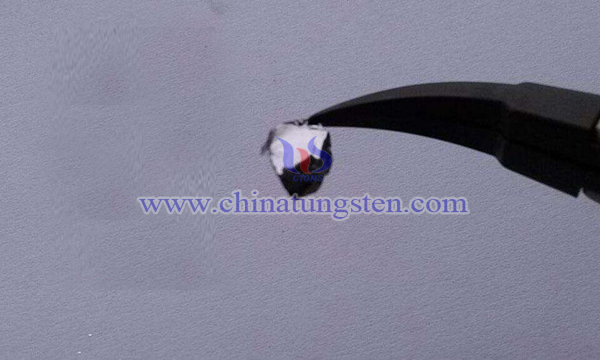An Efficient Preparation Method of Tungsten Selenide (Wse2) Film
- Details
- Category: Tungsten Information
- Published on Wednesday, 29 May 2019 13:19
The tungsten selenide (WSe2) film is one of the top of thermal insulating materials, its thermal conductivity is about one hundred thousandth diamond( apparently the material with the best thermal conductivity). It is the material with the lowest thermal conductivity.
The main structure of tungsten selenide consists of a layer of selenium atoms connected to the middle layer of tungsten atoms, and the energy works between two layers are weak van der Waals forces. WSe2 material has high light absorption capacity, and the absorbed light energy can be efficiently transformed into electrical energy. At the same time, WSE2 has a decomposition temperature of 850 ° C, an excellent acid and alkali resistance, good stability; good lubricity and low shear strength; It is also an anti-magnetic p-type semiconductor material with low conduction band (1.16 eV). Therefore, WSe2 has broad application prospects in catalysis, high temperature solid lubrication, high efficiency solar cells and high performance adiabatic ceramic materials. Its preparation and performance research have been widely concerned.

The general preparation method of WSe2 is to use tungsten powder and selenium powder as raw materials, and calcination synthesis is carried out by solid phase synthesis at 600 ° C or higher in an argon atmosphere. In addition, there are electrosynthesis methods, thermal decomposition methods, laser melting methods, etc. However, the above methods for synthesizing WSe2 include complicated process control, purity is not high, film material quality is poor, and further heat treatment process is required. At the same time, it has a great effect on environment.
In order to green and efficiently synthesize tungsten selenide(WSe2) film material, some scholars have proposed a new preparation method, which solves the high calcination temperature and high energy consumption in the conventional preparation method, and the prepared sample has a large particle size and no light. Problems such as catalytic activity, which adopt the following technical solutions:
1) Dissolving 0.1-1.0 g of polyvinylpyrrolidone and 0.1-1.0 g of citric acid in 5-20 ml of deionized water, and weigh 0.1-1 g of selenium powder into the above solution and mix well in an oven at 60 °C. Dry, spare.
2) Washing 10 cm2 of metal tungsten with 30 ml of acetone, absolute ethanol, deionized water, and drain. Then, it was immersed in 100 mL, 0.5 mol/L diluted hydrochloric acid solution for 30 min, then washed with deionized water, dried and then used.
3) The preparation reaction is carried out in a tube furnace, and before the reaction, an inert atmosphere (one of high purity nitrogen gas, high purity argon gas, one of them) is introduced in advance to remove air. Then, the heating and heating are started, and the gas to be switched is switched to a hydrogen/nitrogen mixed gas or a hydrogen/argon mixed gas in which the hydrogen content is from 0.5% to 20% (V/V). After reaching the target reaction temperature (300-900 ° C) for 2-8 h, it is naturally cooled. A hydrogen/inert gas mixture must be maintained throughout the heating-heating-cooling process. After the tube furnace temperature is cooled to 200 °C, it can be switched to pure inert gas, and there is no switching.
4) Using the constant temperature zone of the tube furnace as the reaction zone, placing the selenium powder prepared in step 1 on the inlet side, and placing the metal tungsten piece obtained in step 2 on the outlet side; or The selenium powder is directly evenly spread on the metal tungsten sheet, and then the obtained tungsten sheet is placed in a constant temperature region. The in-situ grown tungsten selenide nanowire film material can be obtained by performing the synthesis reaction according to the step 3.
Photocatalytic reduction was carried out using a tungsten selenide nanowire film material. Photocatalysis can be carried out by irradiation with simulated sunlight (300 nm-800 nm) or visible light (400-800 nm) in the presence of CO2 and water molecules. Reducing CO2 as a high value-added, non-polluting product.
- Tungsten Manufacturer & Supplier, Chinatungsten Online: www.chinatungsten.com
- Tungsten News & Prices of China Tungsten Industry Association: www.ctia.com.cn
- Molybdenum News & Price: news.molybdenum.com.cn
- Tel.: 86 592 5129696; Fax: 86 592 5129797; Email: sales@chinatungsten.com



 sales@chinatungsten.com
sales@chinatungsten.com